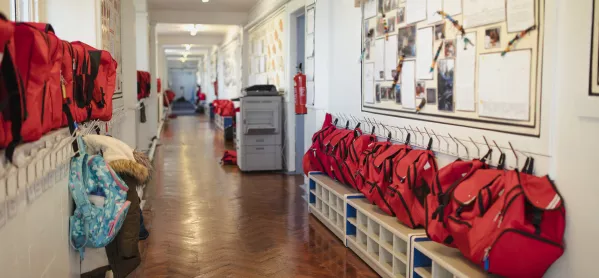- Home
- Around 1,000 schools not fully open last week, says DfE
Around 1,000 schools not fully open last week, says DfE

Around 6 per cent of state-funded schools were fully or partly closed last week, according to the latest Department for Education data.
This is a small decrease from the previous week’s figures taken on 10 September, when 8 per cent of schools were at least partially closed.
However, not all schools had fully reopened to pupils after the summer holidays, with some schools reintroducing pupils gradually as part of a transition process.
And, while the proportion of fully open schools was up by two percentage points to 94 per cent, the percentage of those that cited Covid-related reasons rose from 1 per cent on to 4 per cent last Thursday.
Attendance: 9 in 10 pupils in school at the start of term
Read: DfE ‘puts full attendance above teacher safety rotas’
Boris: ‘Full attendance’ in schools in September
Attendance in schools in England dropped by one percentage point between 10 and 17 September, the figures show.
The statistics show that approximately 87 per cent of pupils were at school on 17 September, slightly down from 88 per cent on 10 September.
Also, the number of pupils on roll in fully open state-funded schools was slightly down from last week: 88 per cent compared with 90 per cent on 10 September.
The figure was lower for students with an education, health and care plan (EHCP): 81 per cent of these pupils were in attendance on 17 September, and the figure was 82 per cent in fully open state-funded schools.
Attendance estimates include pupils absent for Covid-19 and non-Covid-19 related reasons, a Department for Education statement explained.
Almost all state-funded schools (99.9 per cent) were at least partly open on 17 September - and the 0.1 per cent that remained fully closed did so mostly due to Covid-related reasons, the DfE reports.
A total of 16,400 state-funded schools responded to the survey on 17 September, representing 76 per cent of all state-funded schools.
Commenting on the higher percentage of schools reporting being not fully open owing to Covid-related reasons, Geoff Barton, general secretary of the Association of School and College Leaders, said: “Under the circumstances of rising infection rates in the community, and severe problems with the Covid testing system, that is not at all surprising. Frankly, it is a great relief that the situation is not a lot worse.
“Schools are working incredibly hard to manage this very difficult situation, and leaders tell us that there is often little time left in the day for anything other than dealing with symptomatic or positive cases, and navigating the complexities of the public health system.
“This intensity will be hard to sustain over many weeks and months and action is needed to better support schools.
“The Covid testing system hasn’t been adequate and capacity has to improve so that tests can be obtained quickly. And, across society, we have a responsibility individually to behave in a way that reduces the risk of transmission and brings the infection rate down.
“This will help to keep schools open and minimise disruption to children’s education in what is clearly going to be a long, hard winter. We all need to do our bit.”
Kevin Courtney, general secretary of the National Education Union, said that the testing fiasco is eroding trust in school communities.
He said: “It is clear from the latest statistics that the Government is failing in its duty to reduce the infection rate and to provide pupils and teachers with tests in a timely fashion. This is eroding trust among parents, and it will be an uphill struggle for it to be regained.
“There are major steps which the Government could and should take right away. Schools need additional funding to rent more space to enable social distancing and to replace badly ventilated rooms. Schools need more funds to employ extra teachers to take smaller classes.
“Schools need more funding to hire more cleaning staff. But even with these measures there are parts of the country where it will be hard to convince parents that schools are Covid-secure because of the high rates of local infection.”
Keep reading for just £1 per month
You've reached your limit of free articles this month. Subscribe for £1 per month for three months and get:
- Unlimited access to all Tes magazine content
- Exclusive subscriber-only stories
- Award-winning email newsletters



